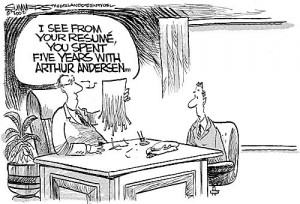image taken from: http://dylannein.wordpress.com/
I’ve recently read a news about the following Olympus’ accounting scandal.
http://www.bloomberg.com/news/2011-11-09/olympus-scandal-means-japan-way-no-longer-excuse.html
I remember learning the case of Enron Scandal in highschool, and I think it is an important example of window dressing that companies must be aware of.
While all other competitors used traditional agent model for reporting revenues, Enron created its own model and reported the whole value of its trades as their revenue. The more competitive the market became, Enron inflated its revenues even more to impress the investors with good business performance. Enron also created many off-shore entities, which were used for avoidance of taxes. Arthur Anderson, the world’s top audit and accounting firm, made Enron’s financial statements look realistic and confusing enough to fool the investors and public. Its complex business model also helped stretch the limits of accounting, and the company used it to manage the revenues and modify their balance sheet to look good. However, the company had to perform more and more financial fraud to make false revenues while they were actually losing more money to do so.
Even now, there are many companies using window-dressing to raise their credit rankings or attract investors. However, we know from the case of Enron that window dressing can never be a perfect solution for companies’ finance. It might result in short-term profits, but in long run, it will actually lose more money just like Enron did. Then the company will eventually collapse and huge damage would be upon the investors. Hence, Enron is an important case that companies should study, so that none of them take the same step as Enron did.

